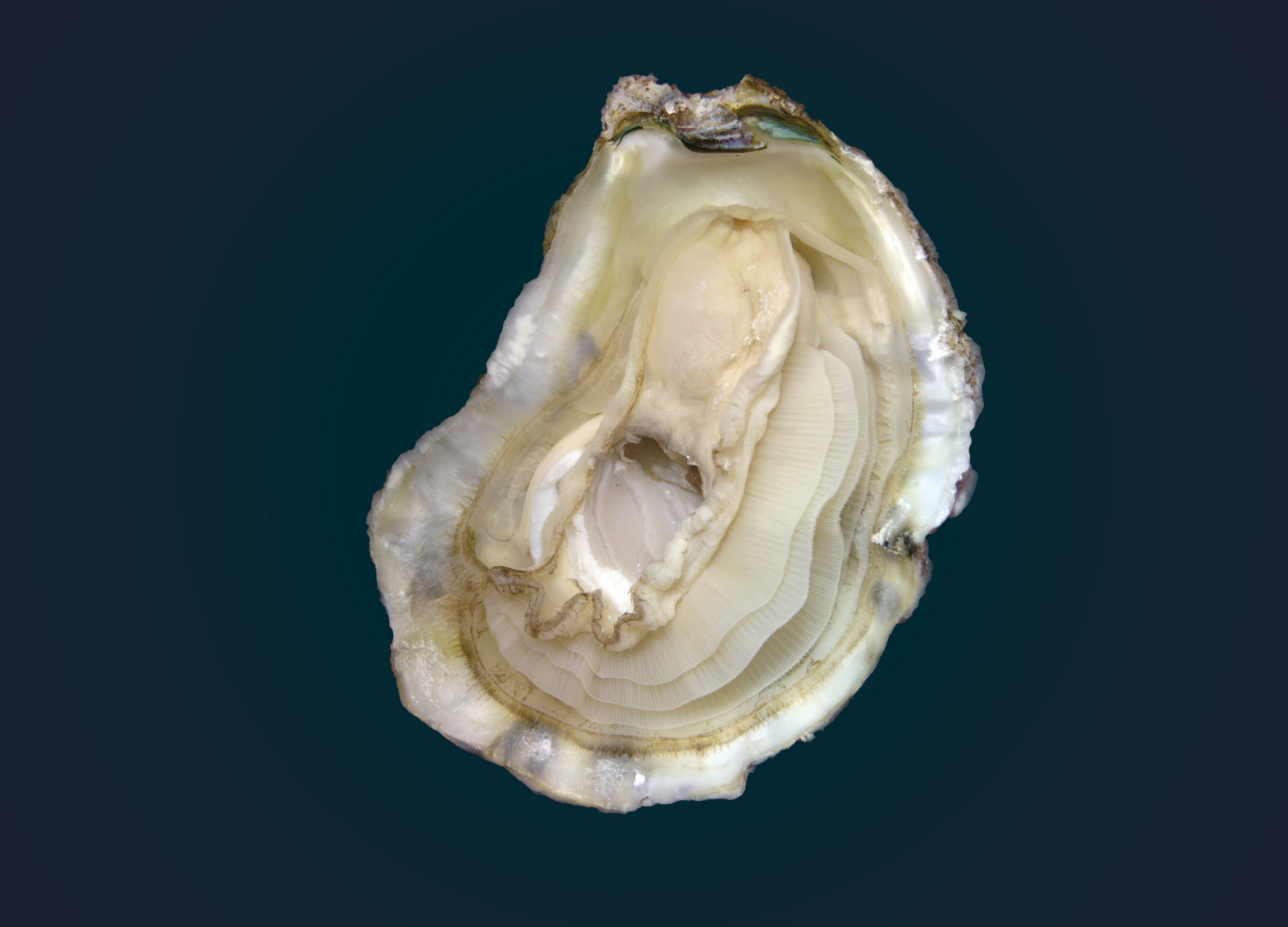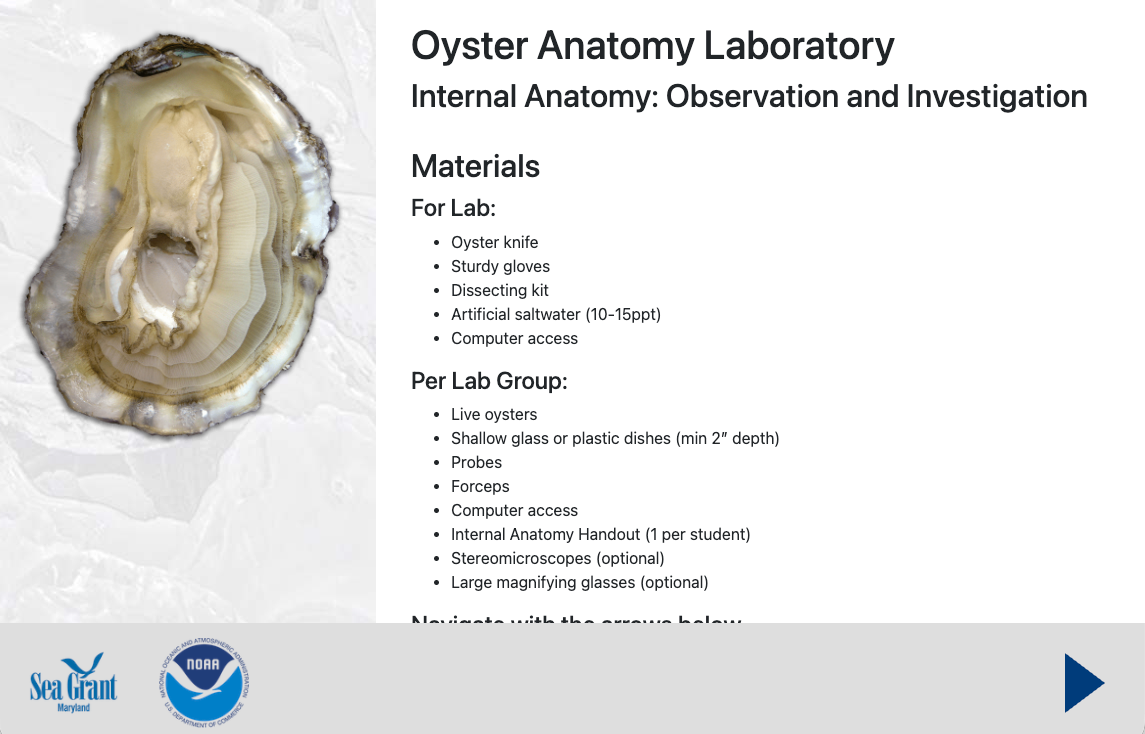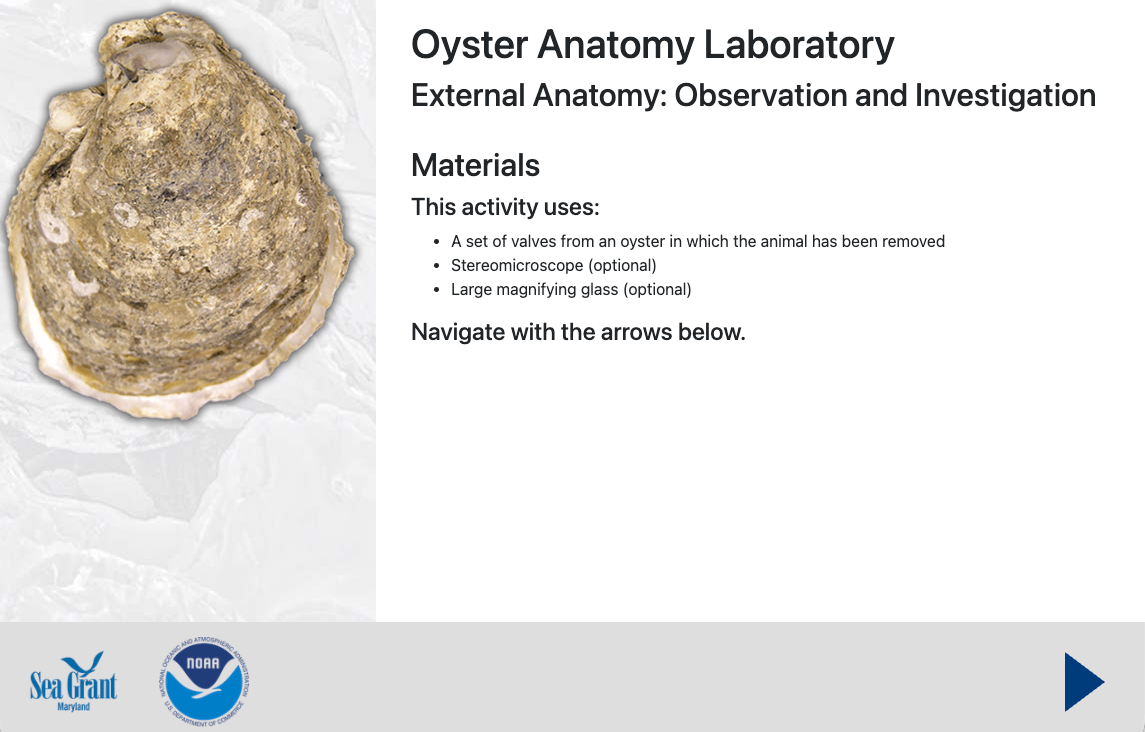Eastern Oyster Education
School:
Maryland Sea Grant CollegeLesson Summary
The eastern oyster (Crassostrea virginica) is an iconic species in the Chesapeake Bay, an integral part of the history of the Bay and of Maryland.

During the Triassic Period, approximately 190 million years ago, C. virginica first appeared and has remained relatively unchanged since that time. In the past, this mollusk was found throughout much of the Chesapeake Bay in water depths up to 100 feet.
Now, they are rarely found below 30 feet and their numbers have been greatly reduced. The adaptive nature of the oyster in a changing estuarine environment allowed it to survive and flourish, but environmental pressures are taking a toll and many scientists are concerned about the decline in the number of oysters in the Bay. Efforts are currently underway to replenish oysters at various sites in the Bay.
Through these interactive lessons, students will study or observe:
- oyster biology
- external and internal anatomy - structure and function
- immune system function
- the suspension-feeding mechanism
NOTE: Three exploration activities use live oysters. These activities are best performed with two live oysters per group of students (one oyster for the internal anatomy activity and 1 oyster for the particulate matters and hunting for hemocytes activities). If restricted to one oyster per group of students, the suggested sequences of activities is a follows: particulate matters, hunting for hemocytes, internal anatomy (recognizing that students will have to be given information about the oyster’s internal anatomy ahead of time to complete this sequence appropriately.
Driving Questions
How do environmental, ecosystem and anthrogenic impacts influence or interact with the anatomical structures and functions of the eastern oyster and related conservation and restoration efforts of this keystone species?
5E For This Lesson Plan
Engagement
Engagement
This activity captures the students' attention, stimulates their thinking, and helps them to access prior knowledge.
Shell Activity
Students will:
- Observe and recognize the unique shape of the oyster as a bivalve.
Exploration
Exploration
In this section students are given time to think, plan, investigate, collect and organize information.
External Anatomy
Students will:
- Identify the external and internal features of the valves as it relates to the anatomy of the oyster.
- Hypothesize about the orientation and symmetry of the oyster.
Internal Anatomy
Students will:
- Study and observe the structure and function of the internal anatomy of the eastern oyster.
Particulate Matters
Students will:
- Observe and describe the feeding process of the eastern oyster and identify key anatomical structures and functions involved in the process.
- Observe and describe the difference between food consumption and the production of pseudofeces.
Hunting for Hemocytes
Students will:
- Observe and describe the immune system of the eastern oyster and identify key cells involved in the process.
- Observe and describe/illustrate the different types of oyster hemocytes.
- Connect the role of oyster hemocytes to the health of the Chesapeake Bay.
Evaluation
Evaluation
This performance-based activity helps students to connect all of the pieces of information involved in these lessons.
Oyster Evaluation
Students will:
- Work in small groups to compare observations and recount how an online video about oysters reflects what was learned from the Maryland Sea Grant Eastern Oyster Education resource.





